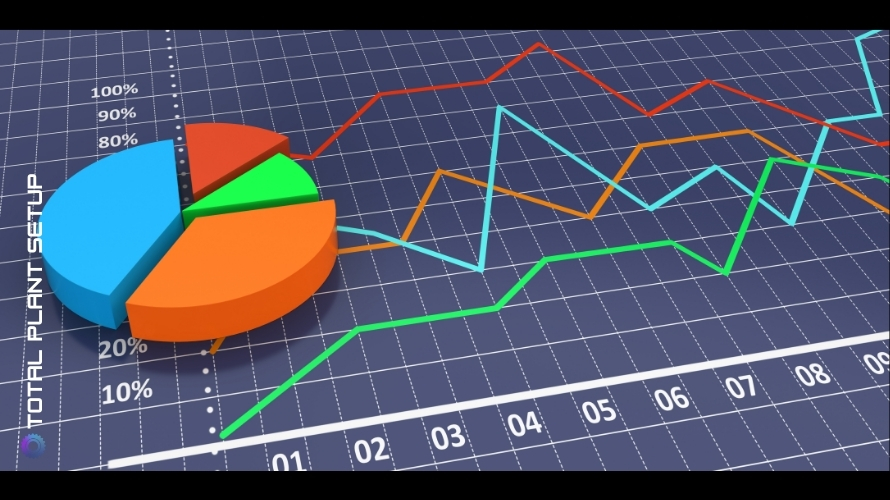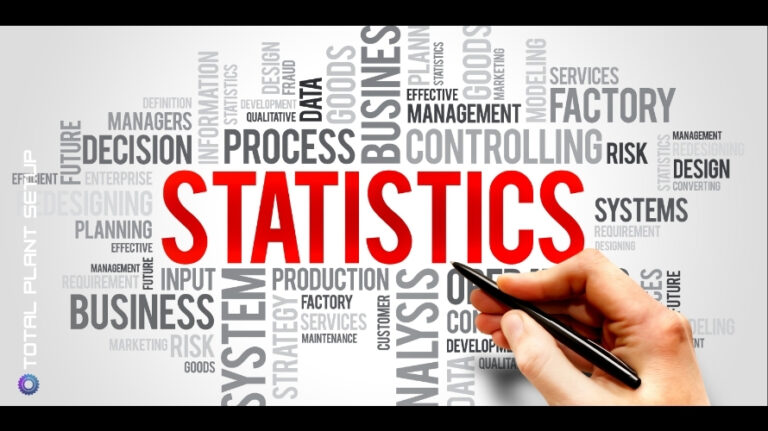Introduction
No one can escape data—numbers are everywhere. Whether in a personal or professional setting, data plays a pivotal role in decision-making. Those who understand and command data effectively often make smarter, faster, and more confident decisions. This blog explores the different types of data used in statistics, analytics, and business intelligence, helping you build a solid foundation for data-driven thinking.
From qualitative insights to complex multivariate datasets, understanding data classification empowers you to extract meaningful patterns and improve processes. Let’s explore the 8 powerful types of data that shape decisions across every industry, and see how they apply to real-world business, finance, healthcare, and more. These classifications are crucial for anyone seeking to understand the types of data for business decision making or delve into classification of data in statistics for operational advantage.
Key Takeaways:
- There are multiple types of data: qualitative, quantitative, time-based, and structural.
- Classifying data accurately is essential for analytics and business decision-making.
- Understanding data types helps you choose the right tools, methods, and visualizations.
- Each data type supports different statistical techniques and real-world applications.
- This blog will help you confidently recognize and apply the right type of data in any scenario.
What Are the Types of Data in Statistics?
The term types of data refers to the various formats and structures that raw facts, figures, and statistics can take. These include numbers, words, measurements, observations, or even descriptions of things. Understanding the types of data is essential because data is the cornerstone of analysis and is only valuable when transformed into insights. For example, a list of customers and their recent purchases is raw data. When analysed to reveal buying trends or product preferences, it becomes a critical asset for marketing teams.
Why Classifying Data Matters in Decision-Making
Understanding the types of data in statistics is foundational for any data-driven operation. Proper data classification allows businesses to choose the right analytical tools and techniques, avoid skewed interpretations, create data visualizations that make sense, ensure data is measured correctly, and align strategic goals with performance metrics. Inaccurate classification can lead to flawed assumptions. For example, treating ordinal survey data like ratio data may lead to incorrect statistical inferences.
From qualitative insights to complex multivariate datasets, understanding data classification empowers you to extract meaningful patterns and improve processes. Let’s explore the 8 powerful types of data that shape decisions across every industry, and see how they apply to real-world business, finance, healthcare, and more. These classifications are crucial for anyone seeking to understand the types of data for business decision making or delve into classification of data in statistics for operational advantage.
Key Takeaways:
- There are multiple types of data: qualitative, quantitative, time-based, and structural.
- Classifying data accurately is essential for analytics and business decision-making.
- Understanding data types helps you choose the right tools, methods, and visualizations.
- Each data type supports different statistical techniques and real-world applications.
- This blog will help you confidently recognize and apply the right type of data in any scenario.
What Are the Types of Data in Statistics?
The term types of data refers to the various formats and structures that raw facts, figures, and statistics can take. These include numbers, words, measurements, observations, or even descriptions of things. Understanding the types of data is essential because data is the cornerstone of analysis and is only valuable when transformed into insights. For example, a list of customers and their recent purchases is raw data. When analysed to reveal buying trends or product preferences, it becomes a critical asset for marketing teams.
Why Classifying Data Matters in Decision-Making
Understanding the types of data in statistics is foundational for any data-driven operation. Proper data classification allows businesses to choose the right analytical tools and techniques, avoid skewed interpretations, create data visualizations that make sense, ensure data is measured correctly, and align strategic goals with performance metrics. Inaccurate classification can lead to flawed assumptions. For example, treating ordinal survey data like ratio data may lead to incorrect statistical inferences.
1. Qualitative Data (Categorical Data)
Qualitative data describes qualities or categories that are not numerical in nature. It helps to label or classify data into distinct groups. For example, a hospital categorizes patients based on their blood type (A, B, AB, O) and satisfaction with service (Excellent, Good, Fair, Poor). This data helps in segmenting patients for clinical research and improving patient care protocols. These are strong examples of qualitative and quantitative data found in healthcare environments.
a. Nominal Data: Nominal data consists of categories without a specific order or ranking. Common examples include eye color (blue, brown, green), marital status (single, married, divorced), or blood type. These are often visualized using bar charts or pie charts. In healthcare, nominal data is used for patient demographics like blood type or gender, which help in medical research and treatment planning.
b. Ordinal Data: Ordinal data involves categories with a meaningful order or rank, but without consistent intervals between them. Examples include survey satisfaction levels (very poor, poor, good, excellent) or education levels. These are often visualized using ordered bar charts. In customer service, ordinal data from satisfaction surveys helps improve operational strategies and emphasizes the differences between nominal and ordinal data.
2. Quantitative Data (Numerical Data)
Quantitative data includes measurable numerical values. For example, a supermarket tracks the number of customers visiting each day (discrete data) and the time each customer spends in-store (continuous data). This helps optimize staffing schedules and store layout design to enhance the customer experience—ideal real-life data classification examples from retail.
a. Discrete Data: Discrete data consists of countable values, often represented by integers. Examples include the number of complaints received, units sold, or days absent. This type of data is often visualized using column charts or dot plots. In manufacturing, discrete data tracks machine failures or defect counts to monitor performance.
b. Continuous Data: Continuous data can take any value within a range and can be infinitely divided. Common examples are temperature, delivery time, or distance traveled. Visualizations like histograms or line graphs are often used. This distinction highlights continuous vs discrete data handling in analytics workflows. In logistics, continuous data plays a vital role in optimizing delivery times and reducing fuel costs.
3. Scales of Measurement
Measurement scales determine how data can be interpreted and which mathematical operations are valid. For instance, a car rental company may use nominal scales to categorize vehicle types (SUV, sedan, hatchback), ordinal scales to rank customer satisfaction, interval scales to measure temperature inside vehicles, and ratio scales to record mileage. This structured classification enhances service quality and operational efficiency, a prime case of applying measurement scales in statistics to real-world business models.
a. Nominal Scale: Nominal scales categorize data without any order. An example is classifying types of insurance (health, auto, home). Insurers often use this data to process and segment claims efficiently.
b. Ordinal Scale: Ordinal scales deal with data that has a ranked order. For example, customer loyalty tiers such as Bronze, Silver, and Gold. E-commerce platforms use this data to create customer-specific offers and campaigns.
c. Interval Scale: Interval scales include data with meaningful intervals but lack a true zero. For instance, temperature in Celsius is a common example. Weather apps rely on interval data to deliver accurate forecasts.
d. Ratio Scale: Ratio scales have meaningful intervals and a true zero, allowing for comparisons like double or half. Examples include income, height, or weight. Finance teams use ratio-scale data to calculate profitability or assess resource efficiency.
4. Time Series Data
Time series data consists of values recorded at regular time intervals. For example, a bank may analyze monthly account balances over a year to understand saving patterns. These insights can drive personalized financial strategies and advisory services.
Examples include monthly website traffic, weekly product returns, and hourly temperature. These are classic examples of types of data that help track trends over time. In retail, time series data forecasts seasonal demand and helps with inventory planning. It’s commonly visualized using line charts with time on the x-axis.
5. Cross-Sectional Data
Cross-sectional data is collected at a single point in time. For example, a research firm might survey 1,000 smartphone users in June 2025 to assess brand preference across different age groups. Such data helps businesses refine product offerings and marketing strategies.
Examples include customer surveys collected during a specific week. In finance, this data helps compare stock portfolios or benchmark company performance. It’s often represented using scatter plots or bar graphs.
6. Grouped Data
Grouped data organizes raw values into intervals for easier analysis. A marketing team, for example, may segment survey responses into income brackets to better understand consumer behavior. This method supports targeting for product campaigns.
Examples of grouped data include income ranges like $0–10K, $10K–20K, or age brackets. Government agencies use such data in demographic reports. Histograms and frequency polygons are common visualization tools.
7. Univariate Data
Univariate data examines one variable at a time. It is ideal for analyzing trends or distribution within a single characteristic. For instance, a school tracking math scores across a student population.
8. Multivariate Data
Multivariate data involves multiple characteristics. An example is assessing the impact of age, income, and education level on purchasing behavior. Healthcare professionals use this data to evaluate patient risks and personalize treatment plans. It supports better data measurement and improved healthcare delivery based on accurate data structure. 3D scatter plots and heat maps are often used for visualization.
Univariate vs Multivariate Data: Univariate data focuses on a single variable, such as test scores for one subject. Multivariate data includes multiple variables, like scores across multiple subjects plus attendance and behavior. Schools use multivariate data to design tailored learning strategies and support student development.
Industry Case Studies by Sector
Healthcare: Hospitals use multivariate data for patient diagnostics. For example, combining age, weight, and cholesterol levels to assess cardiac risk. This data enables more personalized treatment planning and population health studies. for patient diagnostics. For example, combining age, weight, and cholesterol levels to assess cardiac risk.
Manufacturing: In manufacturing, time series data is used to track equipment performance over time. Discrete data captures the number of defects per hour to support quality control, aiding preventive maintenance strategies and process improvement. to track equipment performance. Discrete data captures the number of defects per hour to support quality control.
Finance: Quantitative ratio data such as revenue and profit margins are used in investment decisions. Cross-sectional data helps benchmark company performance across a specific point in time, enabling competitive analysis and valuation modeling. such as revenue and profit margins are used in investment decisions. Cross-sectional data helps benchmark company performance.
Retail: Customer satisfaction surveys produce ordinal data that reflects how customers feel about products or services. Sales figures across months offer time series insights to plan promotions and stock inventory more effectively. produce ordinal data. Sales figures across months offer time series insights to plan promotions.
Visualizing Data Types
| Data Type | Best Visualization | Notes |
| Nominal | Pie Chart, Bar Chart | Categories with no order |
| Ordinal | Ordered Bar Chart | Shows ranking |
| Discrete | Column Chart, Dot Plot | Count data |
| Continuous | Line Chart, Histogram | Measured values |
| Time Series | Time-based Line Chart | Trends over time |
| Cross-Sectional | Scatter Plot, Bar Graph | One-time comparisons |
| Grouped | Histogram | Binned or interval-based values |
| Multivariate | Heat Map, 3D Scatter Plot | Shows relationships between variables |

Summary Table
| Data Type | Subtype | Examples | Key Features |
| Qualitative | Nominal | Gender, Colors, Nationality | No order |
| Ordinal | Satisfaction, Education Level | Ordered categories | |
| Quantitative | Discrete | Number of items, Defects | Countable |
| Continuous | Temperature, Height | Measurable | |
| Measurement Scales | Nominal | Hair color | Categories only |
| Ordinal | Rankings | Order without equal intervals | |
| Interval | IQ, Temperature (C) | Equal intervals, no true zero | |
| Ratio | Weight, Age, Income | True zero + equal intervals | |
| Time-Based | Time Series | Stock prices, Sales trends | Sequential over time |
| Cross-Sectional | Survey data | One point in time | |
| Data Structure | Grouped | Income brackets, Age groups | Simplified into ranges |
| Univariate | Single variable | One attribute per observation | |
| Multivariate | Multiple factors | Relationships between variables |
Conclusion
Understanding different types of data is essential for accurate analysis, smarter business strategies, and evidence-based decisions. Each of these types—whether qualitative or quantitative, time-based or structural—is a vital member of the broader family of types of data used in analytics and decision-making. They each serve a unique role in driving insights. These are essential components of real-world data examples that influence strategy across industries.
At Total Plant Setup, we help businesses make informed decisions by using intelligent data models and tools. Whether you’re dealing with inventory metrics, process control, or customer feedback analysis, our tailored solutions leverage the right type of data for maximum value.
Start your data-driven transformation today with the tools, apps, calculators, and smart ERP integrations (like Odoo, Zoho, SAP, and Microsoft Dynamics) designed for businesses of all scales.











